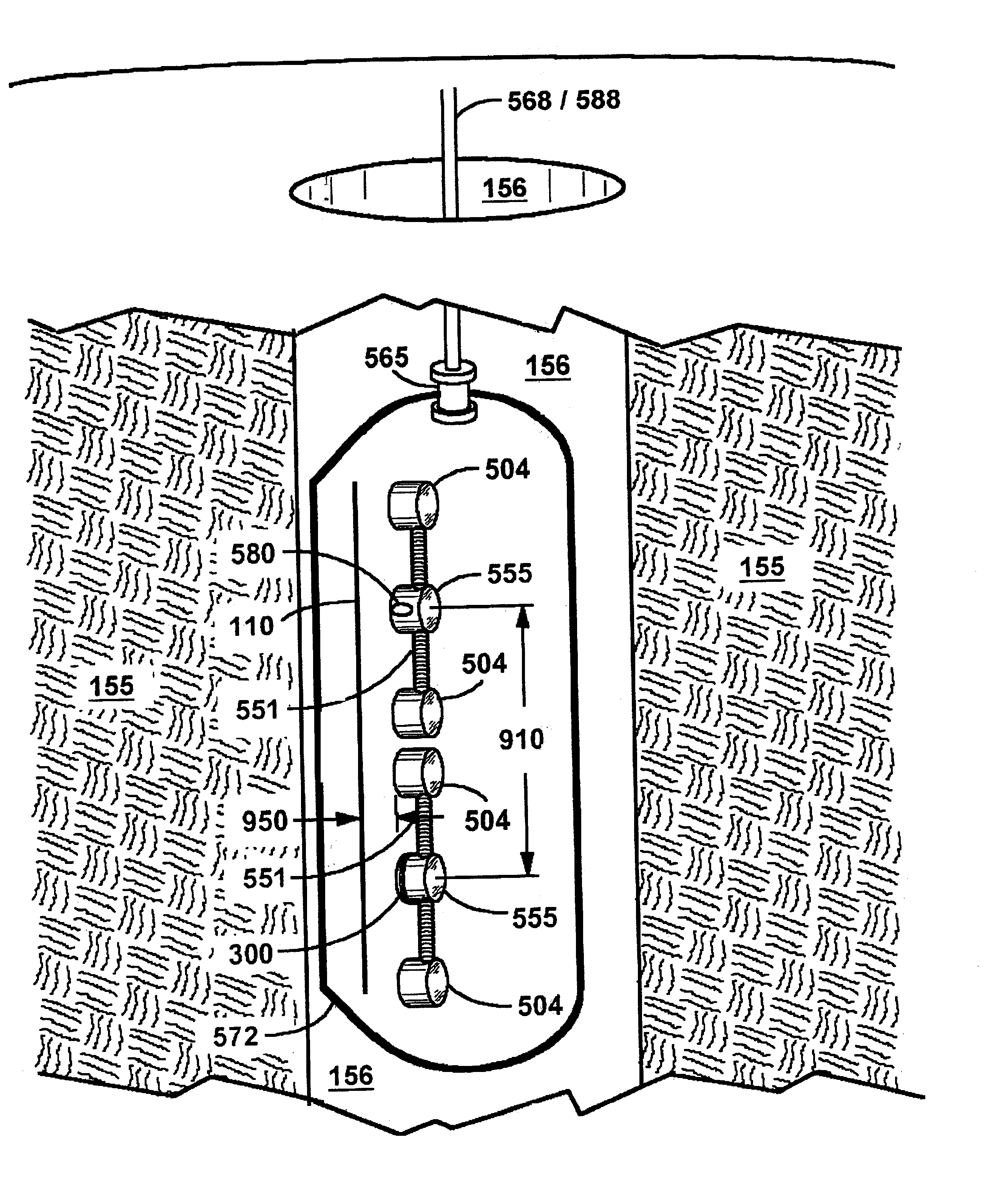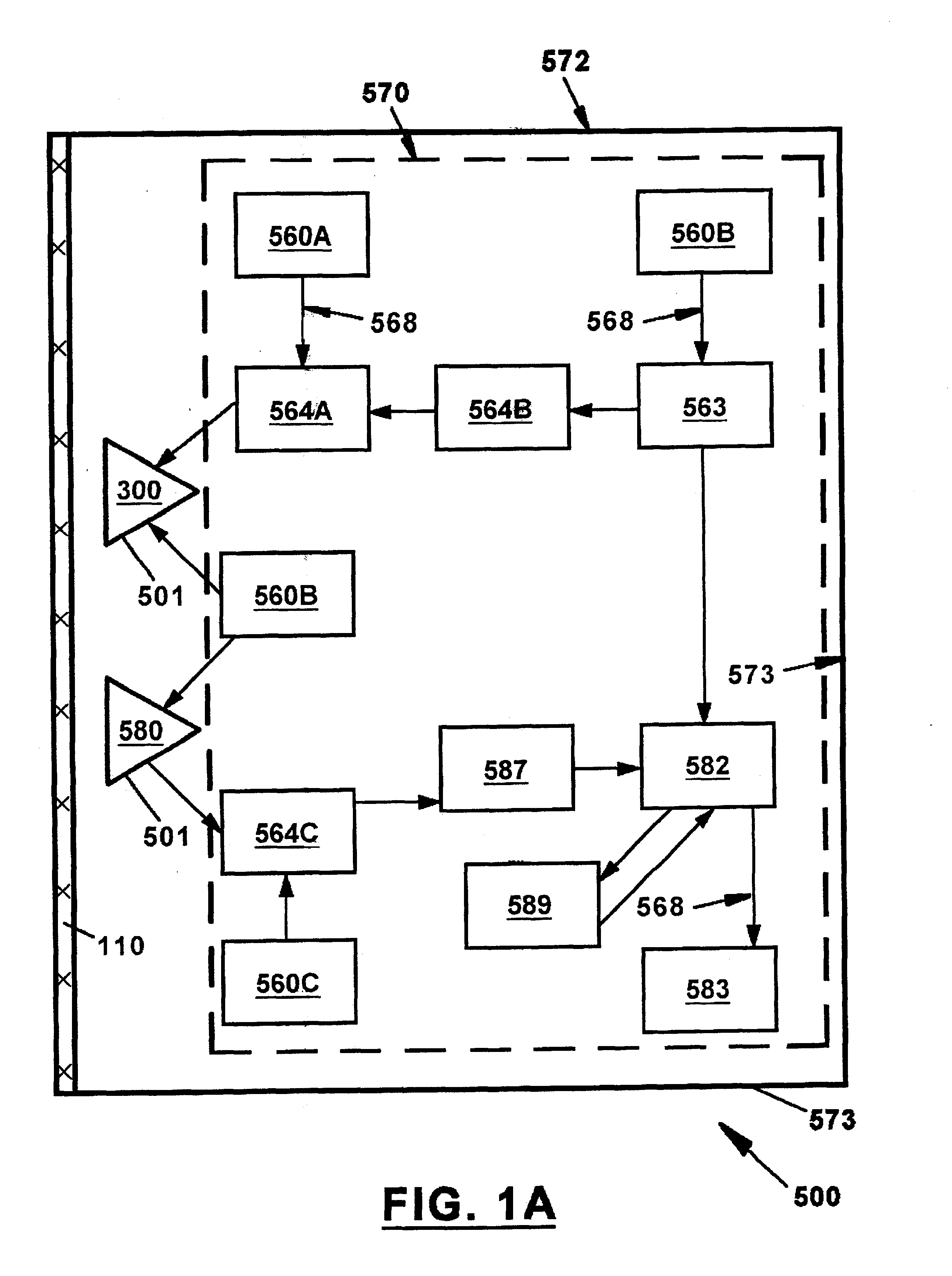Measurement of subterranean lithology using electromagnetic energy
a technology of electromagnetic energy and subterranean lithology, which is applied in the direction of material magnetic variables, using reradiation, instruments, etc., can solve the problems of limited resolution of measurements, inconvenient use of existing logging tools, and insufficient penetration of geologic formation surrounding the borehole, etc., to achieve high resolution, increase electromagnetic energy penetration, and retard energy dissipation
- Summary
- Abstract
- Description
- Claims
- Application Information
AI Technical Summary
Benefits of technology
Problems solved by technology
Method used
Image
Examples
Embodiment Construction
[0065]This invention pertains to a method and apparatus for measuring the subterranean lithology using Electromagnetic energy. The invention is applicable to the measurement from within uncased boreholes, i.e., and open-holes. Also combined into the configuration is Magnetic Lenses™ focus and Magnetic Antenna™ transmitter-receptor. These facilitate the present invention achieving increased penetration of electromagnetic energy into the geologic formation from the borehole with high resolution and the ability to control the direction in which the measurements are taken. The invention teaches a method and apparatus for concentrating magnetic flux to retard the dissipation of energy penetrating through the ground formation. The invention utilizes the Magnetic Antenna transmitter-receptor and Magnetic Lensing focus that counter the rapid dissipation of electromagnetic energy.
[0066]The invention may utilize one or more monostatic or bistatic configurations of magnetic flux transmitters a...
PUM
 Login to View More
Login to View More Abstract
Description
Claims
Application Information
 Login to View More
Login to View More - R&D
- Intellectual Property
- Life Sciences
- Materials
- Tech Scout
- Unparalleled Data Quality
- Higher Quality Content
- 60% Fewer Hallucinations
Browse by: Latest US Patents, China's latest patents, Technical Efficacy Thesaurus, Application Domain, Technology Topic, Popular Technical Reports.
© 2025 PatSnap. All rights reserved.Legal|Privacy policy|Modern Slavery Act Transparency Statement|Sitemap|About US| Contact US: help@patsnap.com



